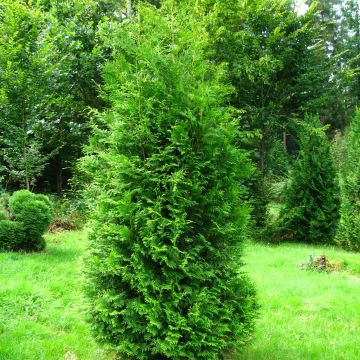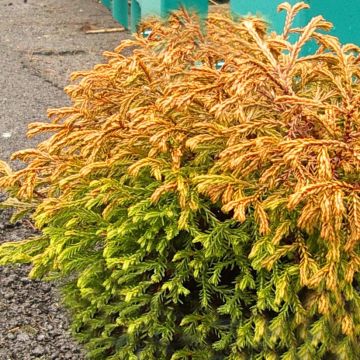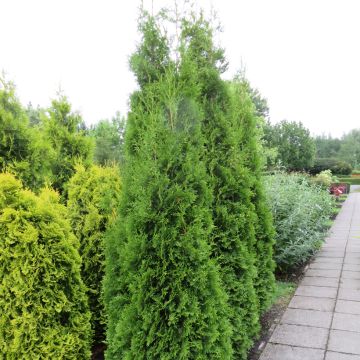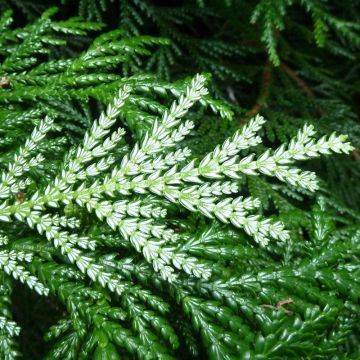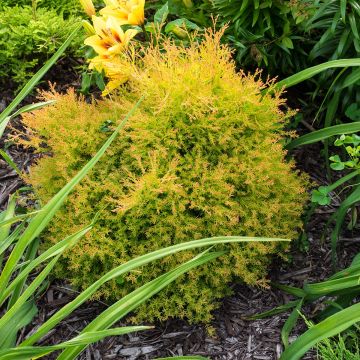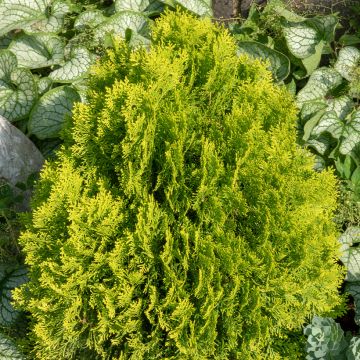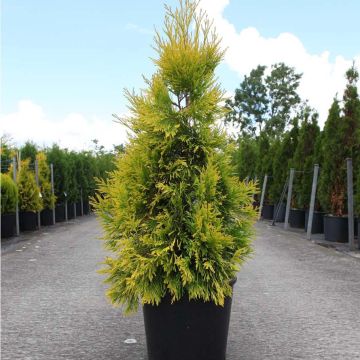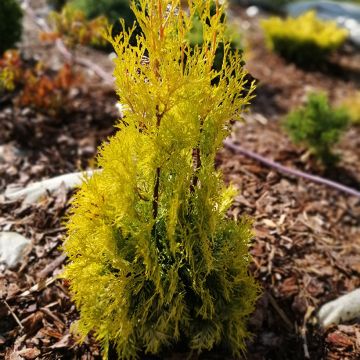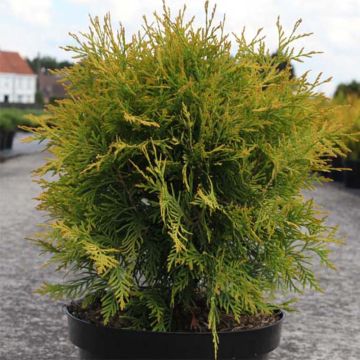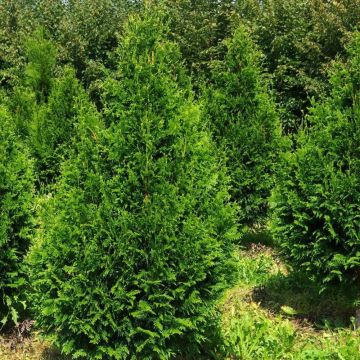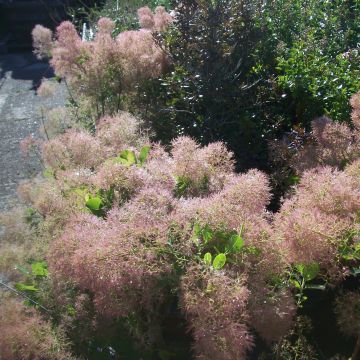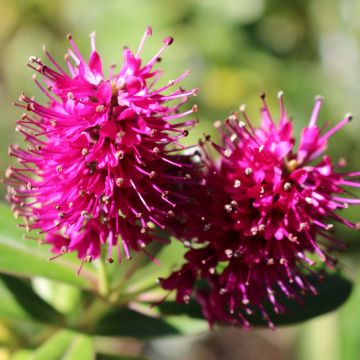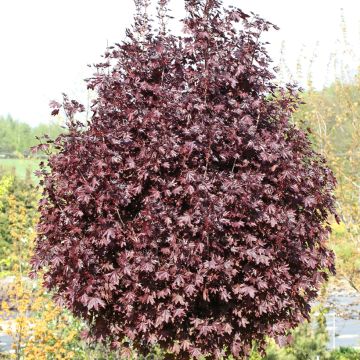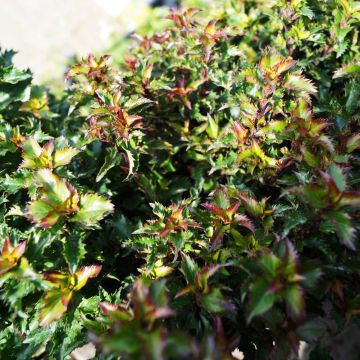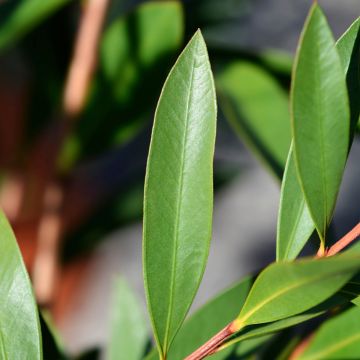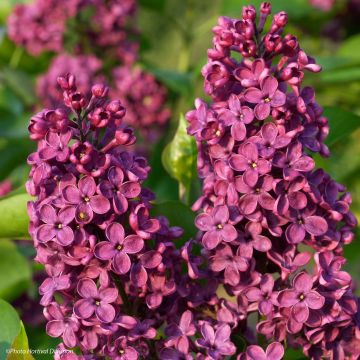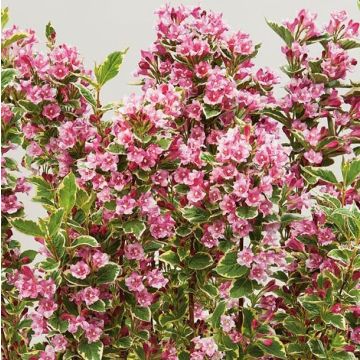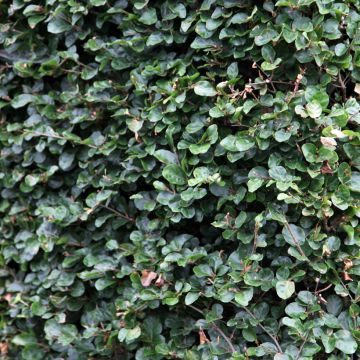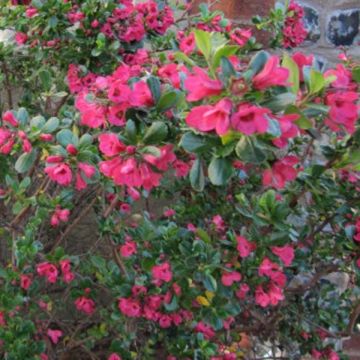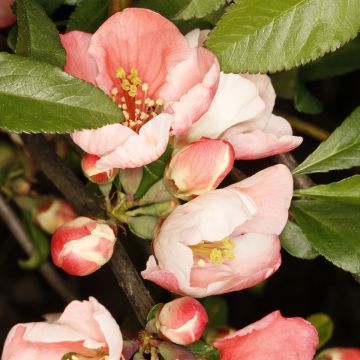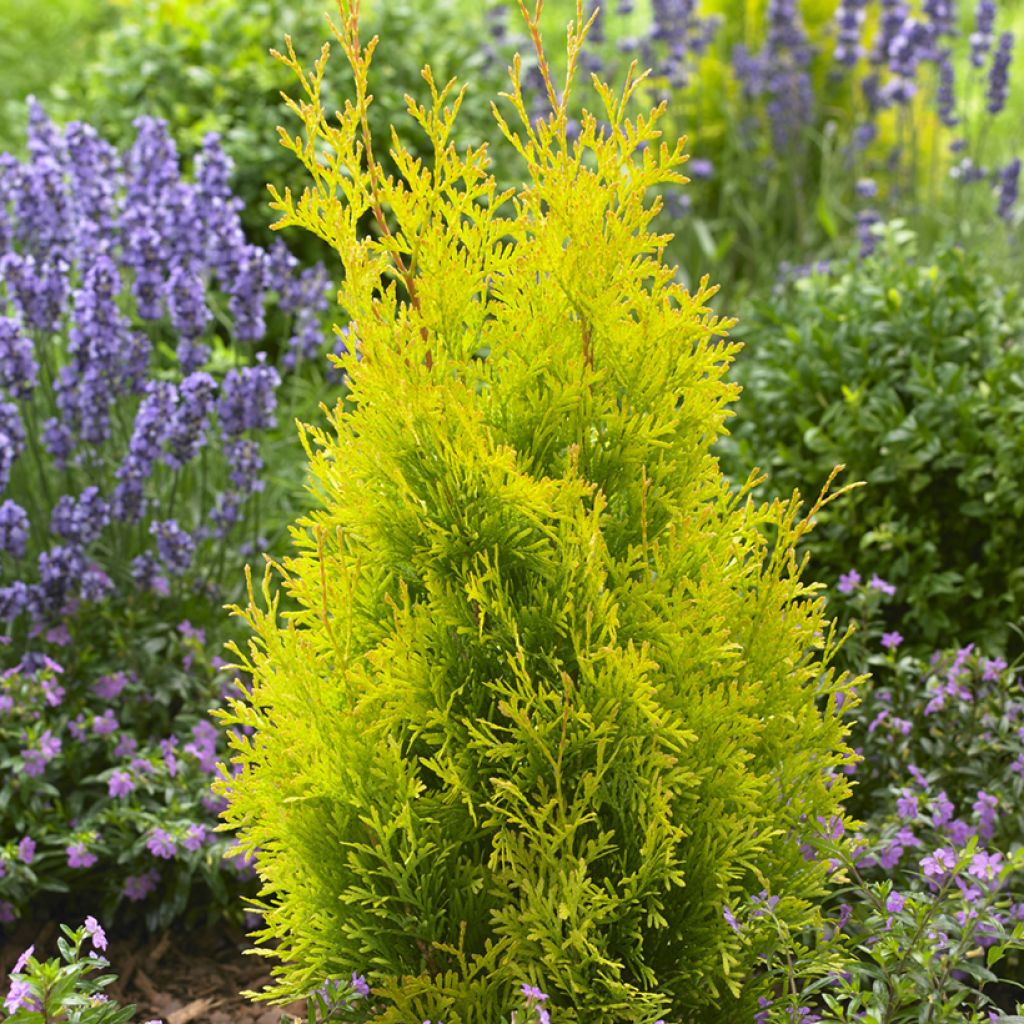

Thuja occidentalis Sunny Smaragd - Eastern White Cedar
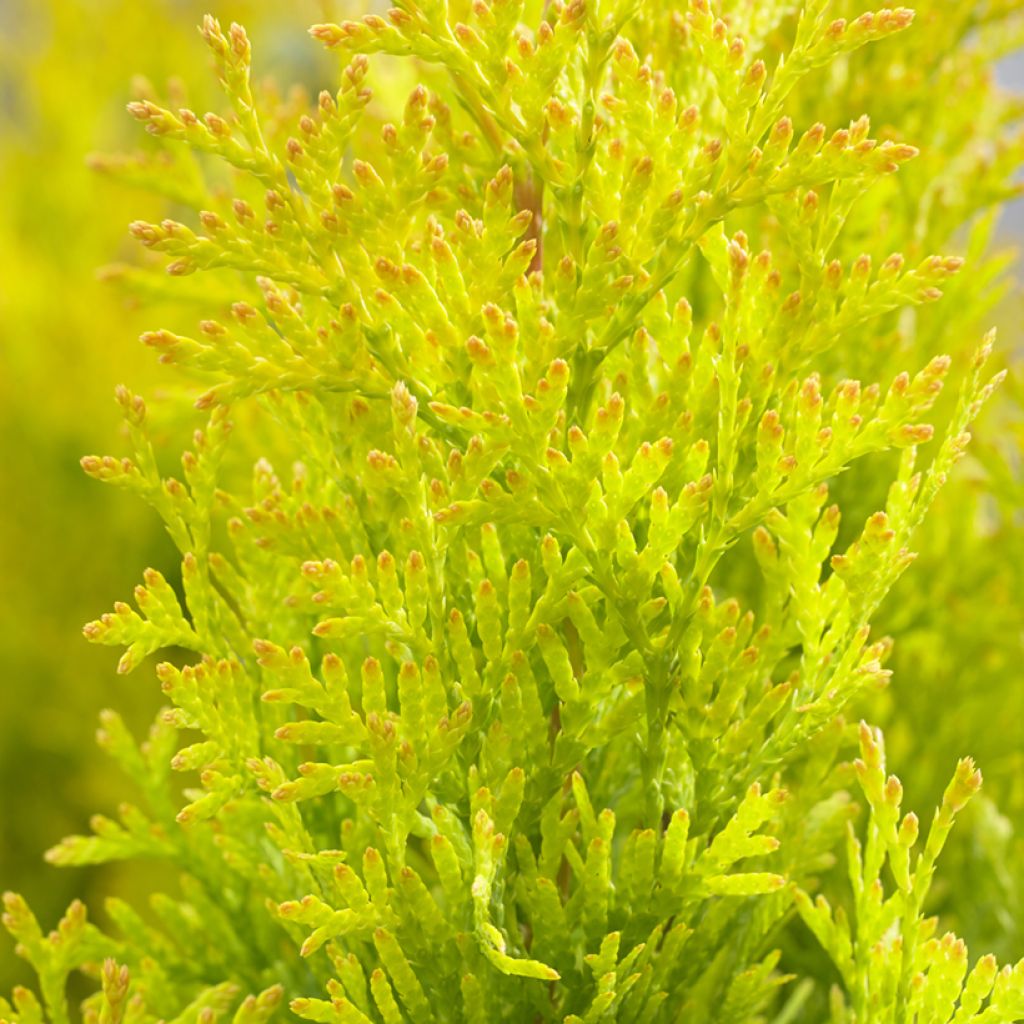

Thuja occidentalis Sunny Smaragd - Eastern White Cedar
Thuja occidentalis Sunny Smaragd - Eastern White Cedar
Thuja occidentalis Sunny Smaragd® ('Hoogi023'PBR) EU 51756
Eastern White Cedar, Northern White Cedar, American Arborvitae, Eastern Arborvitae
This item cannot be shipped to the selected country
Delivery charge from €5.90
More information
Schedule delivery date,
and select date in basket
This plant carries a 24 months recovery warranty
More information
We guarantee the quality of our plants for a full growing cycle, and will replace at our expense any plant that fails to recover under normal climatic and planting conditions.
From €5.90 for pickup delivery and €6.90 for home delivery
Express home delivery from €8.90.
Does this plant fit my garden?
Set up your Plantfit profile →
Description
Thuja occidentalis 'Sunny Smaragd' is a narrow, conical Canadian Arborvitae with bright golden yellow, evergreen foliage. This compact golden conifer will brighten up your garden planted individually or in a mass planting, and your terrace, in a large pot. It grows quickly and is suitable for use as a single-species hedge. This hardy and easy to maintain bush thrives in full sun and partial shade in moist, well-drained soil.
From the Cupressaceae family, Thuja occidentalis is native to northeastern North America. It reaches a height of 15 to 20 m, with a naturally conical habit. Its trunk has a highly decorative reddish-brown bark. The Canadian Arborvitae, also known as the Eastern Arborvitae or White Cedar of Canada, has given rise to numerous cultivars selected for their ornamental qualities, such as two golden varieties, 'Golden Smaragd' and 'Sunny Smaragd'. The latter, a recent Dutch creation by Ets Hoogenraad, stands out from the former, a Polish creation by Edward Kubik, with its brighter yellow colour that persists throughout the year, and its faster growth. It forms a dense, upright conifer with a perfect pyramidal shape, reaching a height of 2 to 2.5 m and a width of 1 m after 10 years. Its flattened, short branches are covered with overlapping, golden yellow, scale-like leaves that remain vibrant all year round. They may turn orange in cold weather. This variety thrives in full sun and partial shade, where its foliage remains golden.
Low-maintenance and luminous 'Sunny Smaragd' Western Arborvitae will find its place in any garden. Plant it in a large rock garden, individually in a small garden, or in a mass alongside the David Austin rose 'Malvern Hills' with yellow flowers and the perennial geranium 'Rozanne' with numerous large blue flowers. It performs well in pots and does not brown, making it perfect for your terrace. With its fast growth, it is more suitable for use as a hedge than its close cousin 'Golden Smaragd'.
Report an error about the product description
Plant habit
Foliage
Botanical data
Thuja
occidentalis
Sunny Smaragd® ('Hoogi023'PBR) EU 51756
Cupressaceae
Eastern White Cedar, Northern White Cedar, American Arborvitae, Eastern Arborvitae
Cultivar or hybrid
Other Thuya - Thuja
Planting and care
Thuja occidentalis 'Sunny Smaragd' is best planted in ordinary, deep, neutral or even slightly chalky, moist and well-drained soil. It dislikes arid or overly wet soils, scorching temperatures and prolonged drought. Choose a sheltered location protected from strong winds and sunny, or partially shaded in hot climates. This golden variety thrives in full sun. You can add compost at planting and water generously in the first few years and prolonged drought. In very poor soil, apply a special conifer fertiliser every spring and weed the soil in summer. Pruning is not necessary. However, if needed, do so in spring, remove dead or broken branches and maintain its compact habit and beautiful conical shape.
Planting period
Intended location
Care
This item has not been reviewed yet - be the first to leave a review about it.
Hedge shrubs
Haven't found what you were looking for?
Hardiness is the lowest winter temperature a plant can endure without suffering serious damage or even dying. However, hardiness is affected by location (a sheltered area, such as a patio), protection (winter cover) and soil type (hardiness is improved by well-drained soil).

Photo Sharing Terms & Conditions
In order to encourage gardeners to interact and share their experiences, Promesse de fleurs offers various media enabling content to be uploaded onto its Site - in particular via the ‘Photo sharing’ module.
The User agrees to refrain from:
- Posting any content that is illegal, prejudicial, insulting, racist, inciteful to hatred, revisionist, contrary to public decency, that infringes on privacy or on the privacy rights of third parties, in particular the publicity rights of persons and goods, intellectual property rights, or the right to privacy.
- Submitting content on behalf of a third party;
- Impersonate the identity of a third party and/or publish any personal information about a third party;
In general, the User undertakes to refrain from any unethical behaviour.
All Content (in particular text, comments, files, images, photos, videos, creative works, etc.), which may be subject to property or intellectual property rights, image or other private rights, shall remain the property of the User, subject to the limited rights granted by the terms of the licence granted by Promesse de fleurs as stated below. Users are at liberty to publish or not to publish such Content on the Site, notably via the ‘Photo Sharing’ facility, and accept that this Content shall be made public and freely accessible, notably on the Internet.
Users further acknowledge, undertake to have ,and guarantee that they hold all necessary rights and permissions to publish such material on the Site, in particular with regard to the legislation in force pertaining to any privacy, property, intellectual property, image, or contractual rights, or rights of any other nature. By publishing such Content on the Site, Users acknowledge accepting full liability as publishers of the Content within the meaning of the law, and grant Promesse de fleurs, free of charge, an inclusive, worldwide licence for the said Content for the entire duration of its publication, including all reproduction, representation, up/downloading, displaying, performing, transmission, and storage rights.
Users also grant permission for their name to be linked to the Content and accept that this link may not always be made available.
By engaging in posting material, Users consent to their Content becoming automatically accessible on the Internet, in particular on other sites and/or blogs and/or web pages of the Promesse de fleurs site, including in particular social pages and the Promesse de fleurs catalogue.
Users may secure the removal of entrusted content free of charge by issuing a simple request via our contact form.
The flowering period indicated on our website applies to countries and regions located in USDA zone 8 (France, the United Kingdom, Ireland, the Netherlands, etc.)
It will vary according to where you live:
- In zones 9 to 10 (Italy, Spain, Greece, etc.), flowering will occur about 2 to 4 weeks earlier.
- In zones 6 to 7 (Germany, Poland, Slovenia, and lower mountainous regions), flowering will be delayed by 2 to 3 weeks.
- In zone 5 (Central Europe, Scandinavia), blooming will be delayed by 3 to 5 weeks.
In temperate climates, pruning of spring-flowering shrubs (forsythia, spireas, etc.) should be done just after flowering.
Pruning of summer-flowering shrubs (Indian Lilac, Perovskia, etc.) can be done in winter or spring.
In cold regions as well as with frost-sensitive plants, avoid pruning too early when severe frosts may still occur.
The planting period indicated on our website applies to countries and regions located in USDA zone 8 (France, United Kingdom, Ireland, Netherlands).
It will vary according to where you live:
- In Mediterranean zones (Marseille, Madrid, Milan, etc.), autumn and winter are the best planting periods.
- In continental zones (Strasbourg, Munich, Vienna, etc.), delay planting by 2 to 3 weeks in spring and bring it forward by 2 to 4 weeks in autumn.
- In mountainous regions (the Alps, Pyrenees, Carpathians, etc.), it is best to plant in late spring (May-June) or late summer (August-September).
The harvesting period indicated on our website applies to countries and regions in USDA zone 8 (France, England, Ireland, the Netherlands).
In colder areas (Scandinavia, Poland, Austria...) fruit and vegetable harvests are likely to be delayed by 3-4 weeks.
In warmer areas (Italy, Spain, Greece, etc.), harvesting will probably take place earlier, depending on weather conditions.
The sowing periods indicated on our website apply to countries and regions within USDA Zone 8 (France, UK, Ireland, Netherlands).
In colder areas (Scandinavia, Poland, Austria...), delay any outdoor sowing by 3-4 weeks, or sow under glass.
In warmer climes (Italy, Spain, Greece, etc.), bring outdoor sowing forward by a few weeks.

































